Foundation Year
The English curriculum is built around the three interrelated strands of language, literature and literacy. Teaching and learning programs should balance and integrate all three strands. Together, the three strands focus on developing students' knowledge, understanding and skills in listening, reading, viewing, speaking, writing and creating. Learning in English builds on concepts, skills and processes developed in earlier years, and teachers will develop and strengthen these as needed.
In the Foundation year, students communicate with peers, teachers, known adults and students from other classes.
Students engage with a variety of texts for enjoyment. They listen to, read and view spoken, written and multimodal texts in which the primary purpose is to entertain, as well as some texts designed to inform. These include traditional oral texts, picture books, various types of stories, rhyming verse, poetry, non-fiction, film, multimodal texts and dramatic performances. They participate in shared reading, viewing and storytelling using a range of literary texts, and recognise the entertaining nature of literature.
The range of literary texts for Foundation to Year 10 comprises Australian literature, including the oral narrative traditions of Aboriginal and Torres Strait Islander Peoples, as well as the contemporary literature of these two cultural groups, and classic and contemporary world literature, including texts from and about Asia. Literary texts that support and extend Foundation students as beginner readers include decodable and predictable texts that range from caption books to books with one or more sentences per page. These texts involve straightforward sequences of events and everyday happenings with recognisable, realistic or imaginary characters. Informative texts present a small amount of new content about familiar topics of interest; a small range of language features, including simple and compound sentences; mostly familiar vocabulary, known, high-frequency words and single-syllable words that can be decoded phonically, and illustrations that strongly support the printed text.
Students create a range of imaginative, informative and persuasive texts including pictorial representations, short statements, performances, recounts and poetry.
(source: www.australiancurriculum.edu.au)
Achievement Standard
Receptive modes (listening, reading and viewing)
By the end of the Foundation year, students use predicting and questioning strategies to make meaning from texts. They recall one or two events from texts with familiar topics. They understand that there are different types of texts and that these can have similar characteristics. They identify connections between texts and their personal experience.
They read short, decodable and predictable texts with familiar vocabulary and supportive images, drawing on their developing knowledge of concepts of print, sounds and letters and decoding and self-monitoring strategies. They recognise the letters of the English alphabet, in upper and lower case and know and use the most common sounds represented by most letters. They read high-frequency words and blend sounds orally to read consonant-vowel-consonant words. They use appropriate interaction skills to listen and respond to others in a familiar environment. They listen for rhyme, letter patterns and sounds in words.
Productive modes (speaking, writing and creating)
Students understand that their texts can reflect their own experiences. They identify and describe likes and dislikes about familiar texts, objects, characters and events.
In informal group and whole class settings, students communicate clearly. They retell events and experiences with peers and known adults. They identify and use rhyme, and orally blend and segment sounds in words. When writing, students use familiar words and phrases and images to convey ideas. Their writing shows evidence of letter and sound knowledge, beginning writing behaviours and experimentation with capital letters and full stops. They correctly form known upper- and lower-case letters.
(source: www.australiancurriculum.edu.au)
- Plus Plan
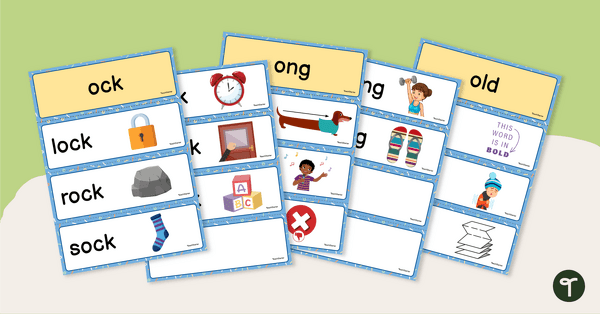
Word Families Sorting Activity – Short O
Use these word families flashcards to help familiarise your students with words that contain the short o vowel sound.
- Plus Plan
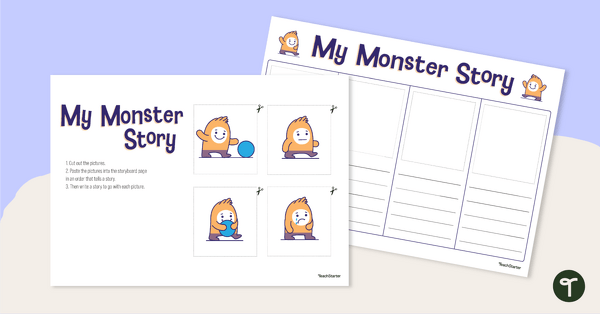
My Monster Story Template
Use this simple story template to get your students writing simple narratives based on a sequence of events.
- Plus Plan
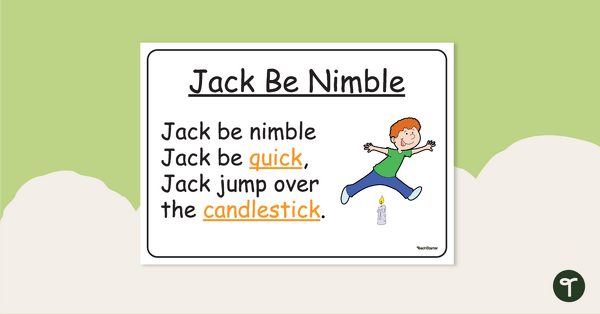
Jack Be Nimble – Nursery Rhyme Poster
Use this “Jack be Nimble” nursery rhyme poster to teach your youngest students about rhyme and rhythm.
- Plus Plan
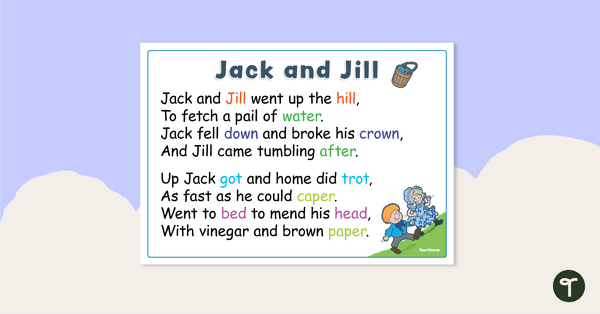
Jack and Jill – Nursery Rhyme Poster
Use this “Jack and Jill” nursery rhyme poster to teach your youngest students about rhyme and rhythm.
- Plus Plan
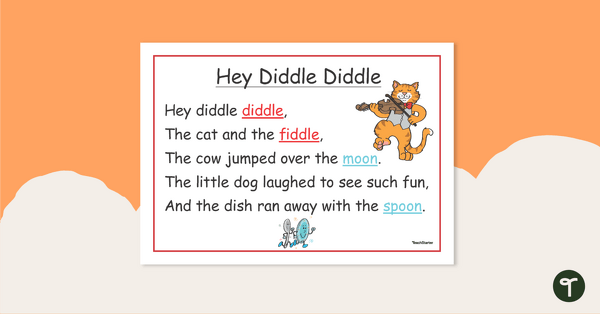
Hey Diddle Diddle – Nursery Rhyme Poster
Use this “Hey Diddle Diddle” nursery rhyme poster to teach your youngest students about rhyme and rhythm.
- Plus Plan
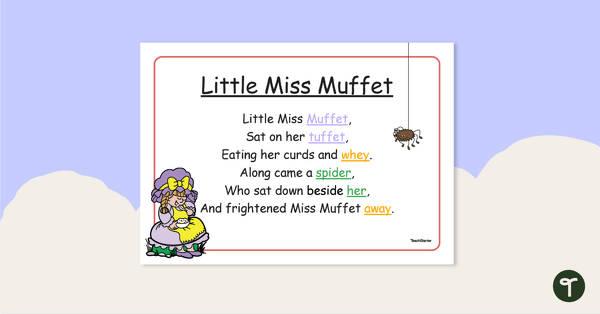
Little Miss Muffet – Nursery Rhyme Poster
Use this “Little Miss Muffet” nursery rhyme poster to teach your youngest students the features of rhymes.
- Plus Plan

Wee Willie Winkie – Nursery Rhyme Poster
Use this “Wee Willie Winkie” nursery rhyme poster to teach your youngest students about rhyme and rhythm.
- Plus Plan
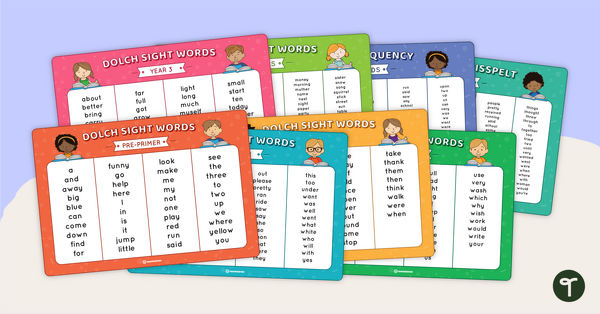
Dolch Sight Words List – Complete Set
Practise word recognition with our set of 8 Dolch Sight Word Lists.
- Plus Plan
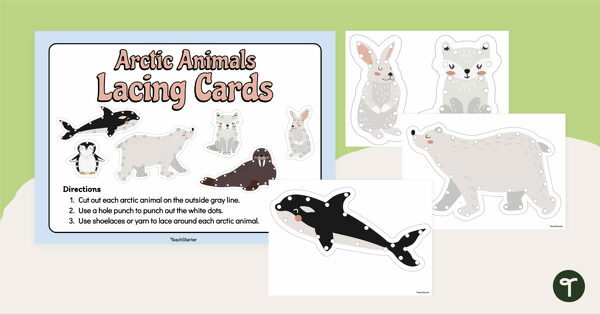
Preschool Polar Animal Lacing Cards
Help your students develop fine motor skills with a set of Preschool Polar Animals lacing cards.
- Plus Plan
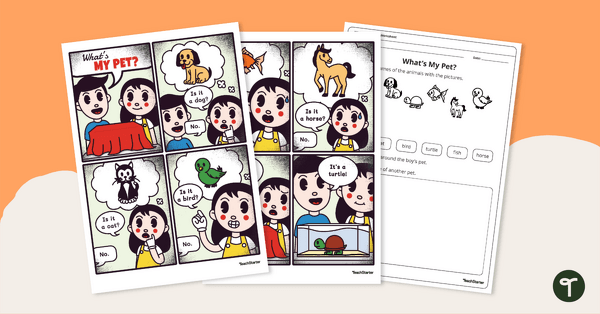
What's My Pet? – Worksheet
A comprehension worksheet for a comic from the Foundation magazine (Issue 2).
- Plus Plan
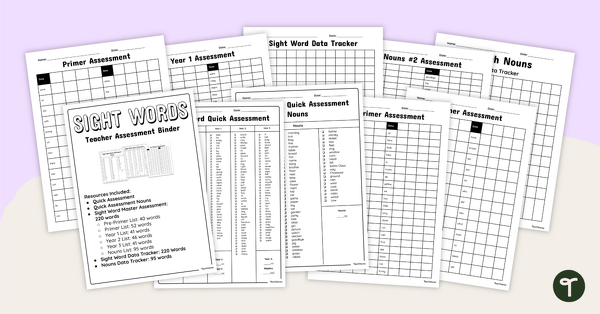
Literacy Teaching Toolkit - Sight Word Assessments
Track Dolch sight word mastery with this set of printable assessments and data sheets to add to your literacy teaching toolkit.
- Plus Plan
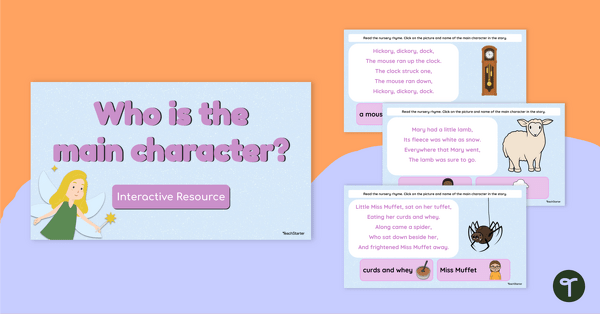
Who Is the Main Character? Interactive Game
Practise identifying the main characters in nursery rhymes with this interactive digital activity.
- Plus Plan
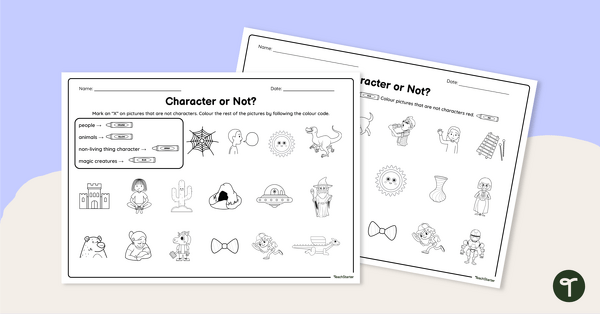
Character or Not? - Colouring Worksheet
Explore the difference between characters and non-characters with this colouring worksheet.
- Plus Plan
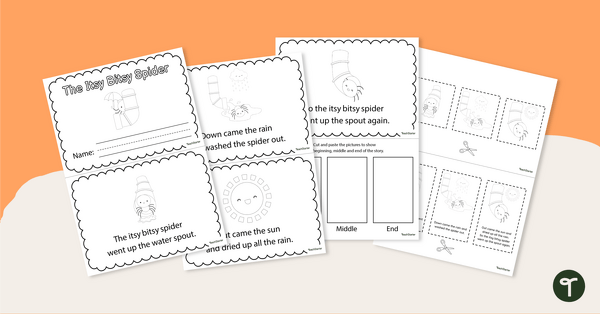
Beginning, Middle and End Mini-Book - Itsy Bitsy Spider
Teach your students about the beginning, middle and end of a story with mini-book retelling of The Itsy Bitsy Spider.
- Plus Plan
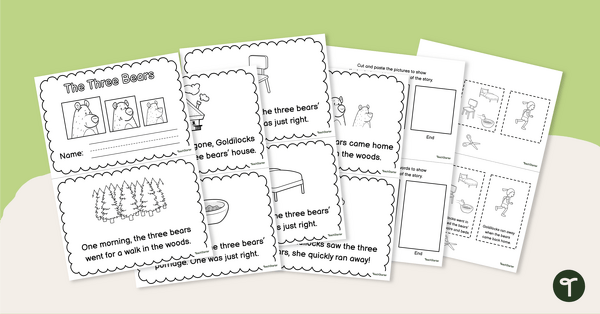
Beginning, Middle and End Mini-Book - The Three Bears
Teach your students about the beginning, middle and end of a story with this mini-book retell of The Three Bears.
- Plus Plan
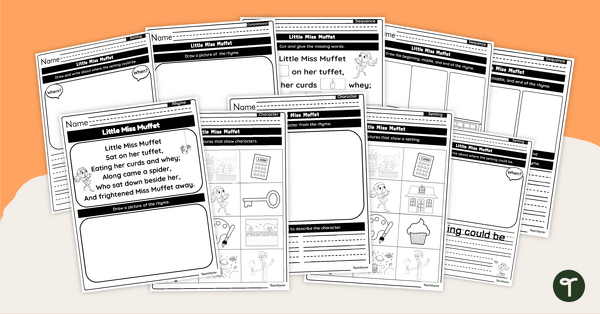
Little Miss Muffet - Story Elements Worksheet Pack
Identify characters, setting and parts of a story with early years reading worksheets featuring the Little Miss Muffet nursery rhyme.
- Plus Plan
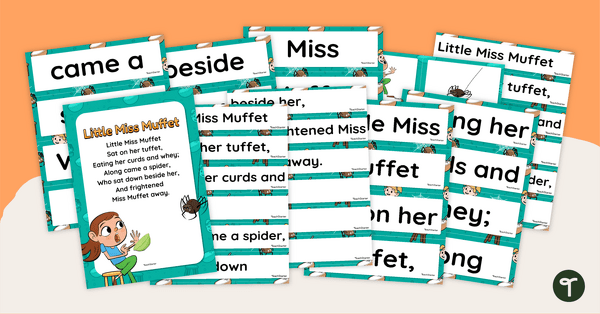
Little Miss Muffet - Sequencing Cards
Read and retell the story within the tale of Little Miss Muffet with a set of retelling sequencing cards.
- Plus Plan
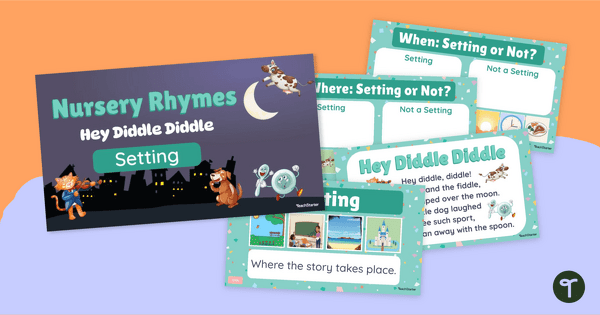
Narrative Settings Teaching Presentation - Hey Diddle Diddle
Engage young readers in texts and learn about setting with an instructional slide deck featuring the Hey Diddle Diddle rhyme.
- Plus Plan
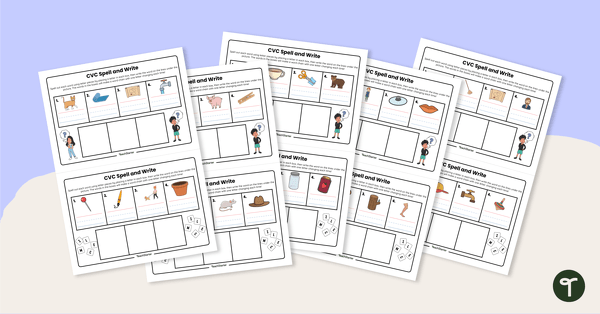
CVC Spell and Write Task Cards
Practise spelling CVC words and manipulating their phonemes to create word chains with this set of hands-on work mats.
- Free Plan
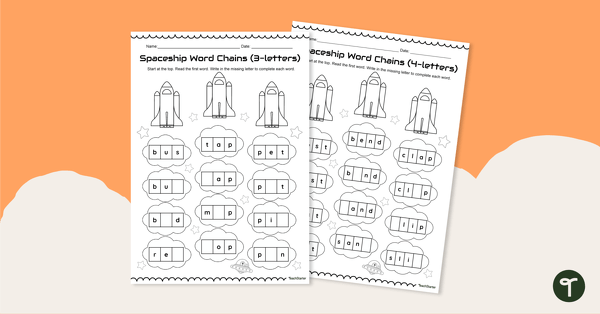
Spaceship Word Chains - Worksheets
Manipulate the individual phonemes in 3- and 4-letter words to create new ones with this set of word chain worksheets.
- Plus Plan
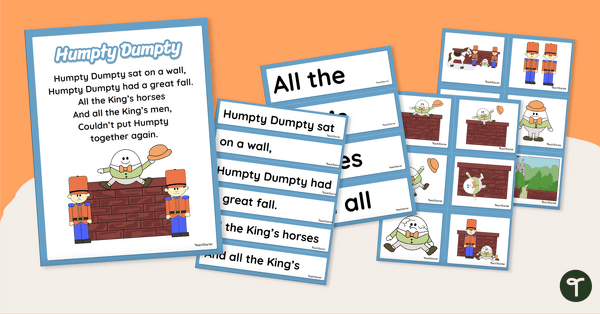
Humpty Dumpty Sequencing Activity Cards
Read and retell the story within the Humpty Dumpty tale with a set of retelling sequencing cards.
- Plus Plan
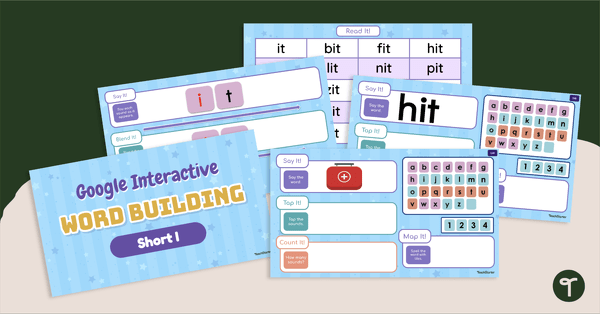
Learn to Read Short I - Daily Phonics for Kids
Teach your students to read short I words with a daily digital phonics teaching presentation.
- Plus Plan

Gingerbread Phonics - Letter-Sound Correspondence Sort
Have some sweet Christmas reading fun with a gingerbread-themed letter-sound correspondence sorting activity.
- Plus Plan
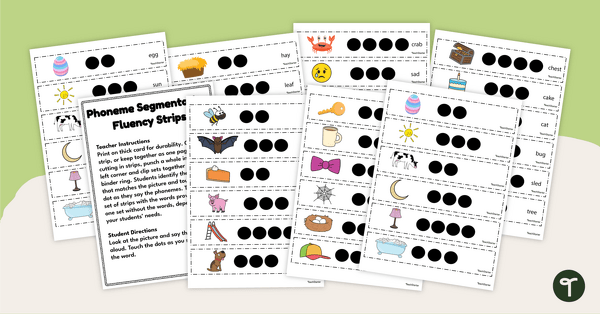
Phoneme Segmentation Fluency Strips
Develop students’ ability to segment and blend phonemes with this comprehensive set of phoneme segmentation fluency strips.
- Plus Plan
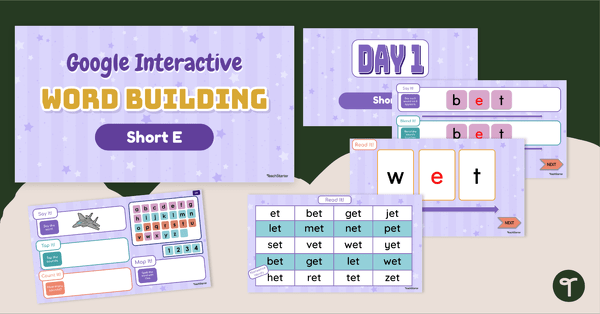
Learn to Read Short E - Daily Phonics for Kids
Immerse your students in the short 'e' vowel sound with this comprehensive series of phonics activities.
- Plus Plan
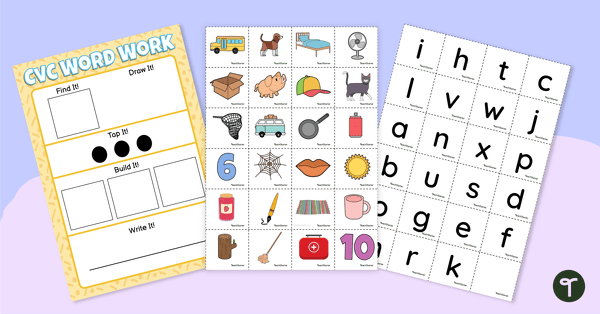
CVC Word Work Mat
Practise segmenting and blending simple words with this CVC word building mat.
- Plus Plan
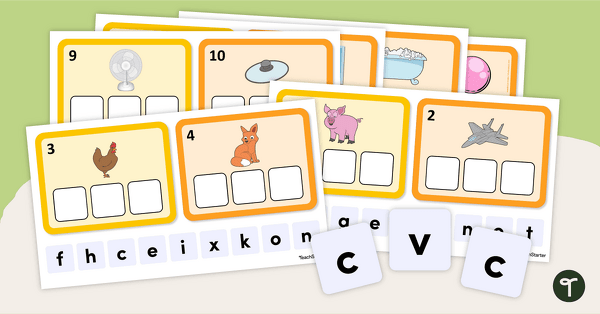
CVC Word Building - Google Slides Interactive Activity
Practise spelling and reading CVC words by identifying and blending sounds using this interactive Google Slides activity.
- Plus Plan

Community Helpers: Nurse – Comprehension Worksheet
A comprehension worksheet for an article from the Foundation magazine (Issue 2).
- Plus Plan

Community Helpers: Police Officer – Comprehension Worksheet
A comprehension worksheet for an article from the Foundation magazine (Issue 1).
- Free Plan
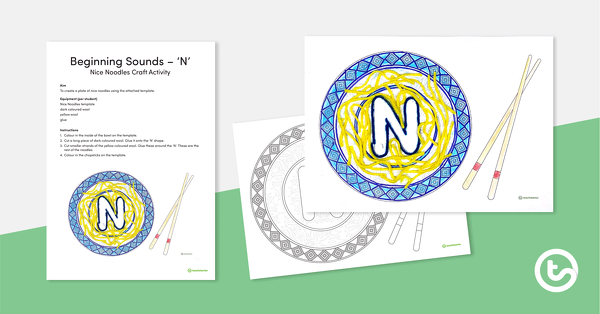
Beginning Letter Craft – N – Nice Noodles
An initial sounds activity to introduce the sound 'n'.
- Free Plan
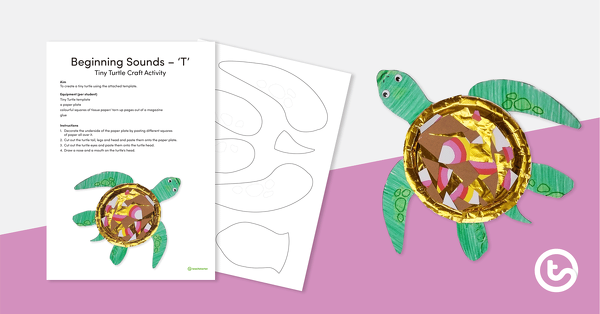
Beginning Sound Craft – T – Tiny Turtle
An initial sounds activity to introduce the sound 't'.
- Plus Plan
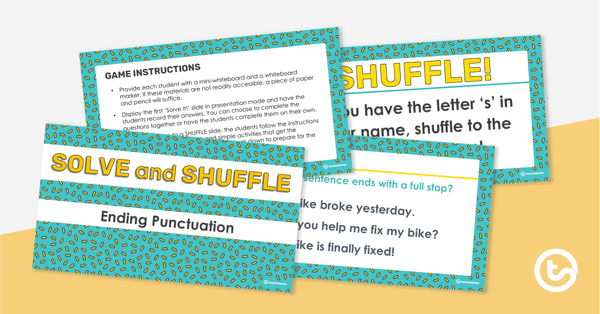
Solve and Shuffle - Ending Punctuation PowerPoint Game
An active PowerPoint game to practise ending punctuation.